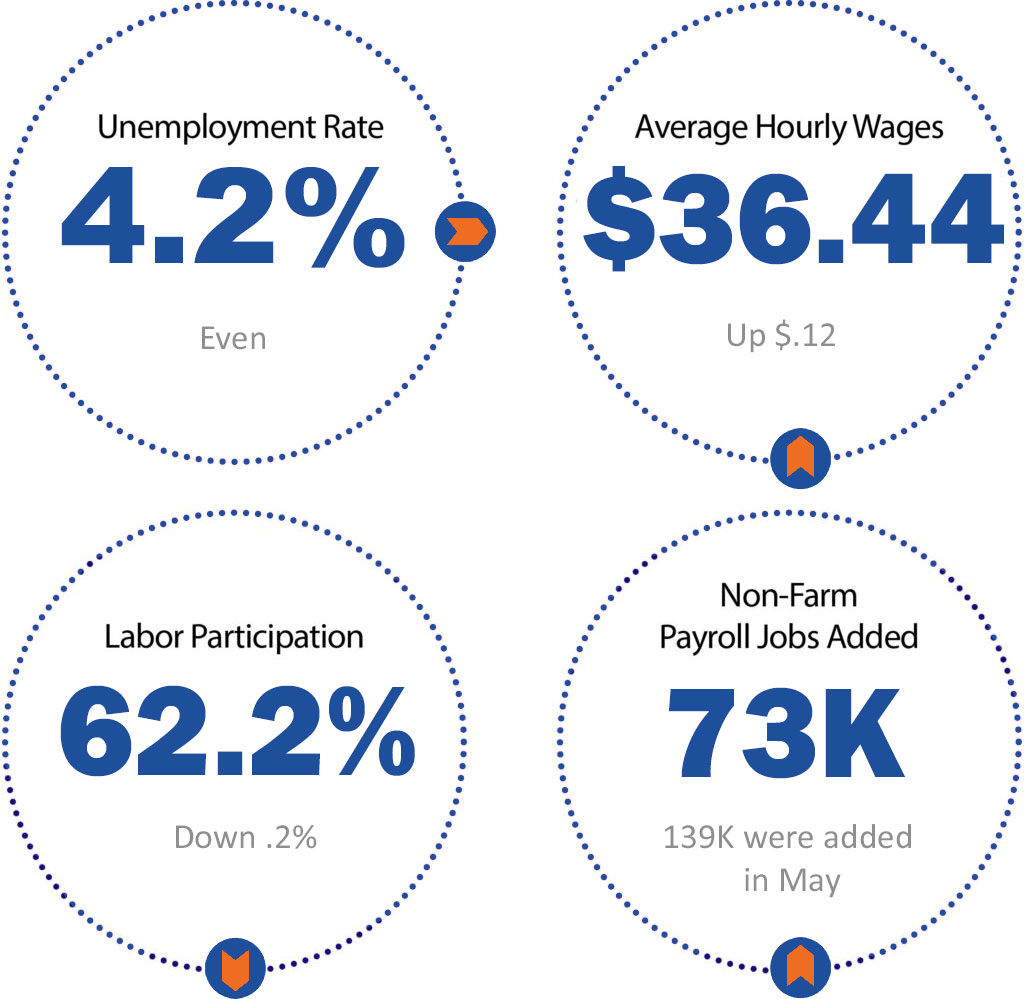Quick Facts:
- Total nonfarm payroll employment changed little in July (+73,000) and has shown little change since April. The unemployment rate was steady at 4.2 percent.
- Employment continued to trend up in health care and in social assistance. Federal government continued to lose jobs.
- In July, the number of long-term unemployed increased by 179,000 to 1.8 million. The long-term unemployed accounted for 24.9 percent of all unemployed people.
- The number of people employed part time for economic reasons, at 4.7 million, changed little in July.

Looking Forward:
- Job growth slowed in July with only 73,000 new jobs added relative to expectations for 104,000 gains. The prior two months were also revised meaningfully lower, which indicates the labor market is losing momentum. Payrolls for May were slashed by 125,000 to a gain of only 19,000 jobs. The BLS described the revisions to May and June payrolls data as “larger than normal.”
- The weak report, including the dramatic revisions, could provide incentive for the Federal Reserve to lower interest rates when it next meets in September. Following the report, futures traders raised the odds of a cut at the meeting to 75.5%, up from 40% on Thursday, according to CME Group data.
- There were few signs of strength in the July jobs count, with gains coming primarily from health care, a sector that has continued to show strength in the post-Covid recovery. The group added 55,000 jobs, easily leading the way. Social assistance also contributed 18,000 jobs. The two sectors combined for some 94% of the job growth. Retail added nearly 16,000 jobs and the financial sector was up 15,000.
- Gross domestic product increased at a 3% annualized pace in the second quarter, considerably better than expected. However, that largely reflected the unwinding of a huge import buildup ahead of Trump’s April 2 “liberation day” tariff announcement. Underlying demand numbers in the Commerce Department report were mostly weak, while consumer spending increased from the first quarter but was still tepid.
Source: U.S. Bureau of Labor Statistics – The Employment Situation – July 2025


